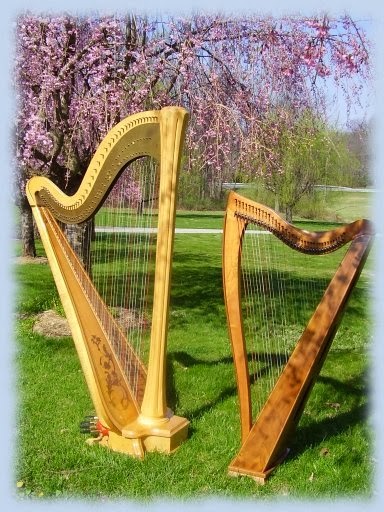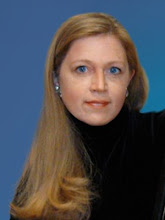I would like to begin my Teacher's Corner segments with hand position because, of all the challenges involved in playing harp, it is the one most likely to make or break your playing experience.
The appropriate hand position will not only lead you to greater success musically, it will minimize tension and promote a longer playing career. This segment will not focus on specific hand positions (that will be in segment two) but will focus on why hand position matters and what it contributes to your playing.
To properly address hand position we will need to break it into two parts:
A)
Tone and B) F
acility.
Let's start with tone.
One of the nice things about the harp is that, once it is properly tuned, it naturally sounds good almost any way you play it. To clarify my meaning, it is not at all like the sound of a violin or clarinet in the hands of a beginner - no squeaking and squawking. That said, some sounds on the harp are more pleasing than others.
The tone you get from the instrument relies on the displacement, or movement of the harp strings. How the harp string moves and vibrates to produce sound is controlled mainly by three things:
1) The type of harp
2) The type of strings
3) The hand position and touch of the fingers.
1) Harp Types:
Harps come in a variety of sizes and string tensions. How tightly a harp is strung and the construction of the sound chamber, along with your hand position, will seriously affect the tone produced when you play.
The tighter the tension, the more energy it takes to displace the strings and create sound so the more important it is to choose a hand position that can really squeeze the strings rather than simply brushing them.
Pedal harps generally range from the smaller 40 string harp with a straight soundboard to the 47 string Concert Grand harp with an extended soundboard. Add to that the fact that different harp companies are known to produce harps with different tones - some brighter, some deeper. Sting tension tends to be uniform within a harp company but can vary slightly from company to company. And, in general, a new pedal harp will be tighter in tension but will loosen up over time depending on the frequency and strength with which it is played.
When you are in possession of a new pedal harp, a good hand position and a strong tone will help you 'break the instrument in' and contribute to the development of its sound.
Non-pedal harps* also come in a variety of sizes - from as few as 13 strings to as many as 42- and have a broad range of string tension. Some non-pedal harps will say in their advertisements "Pedal Harp Tension". These harps are primarily for those who switch back and forth from pedal to non-pedal harp and desire the same tension or those folks who are only playing a non-pedal harp until they can afford a pedal harp.
If you plan to transition from a non-pedal harp to a pedal harp, the hand position you use should be one that produces the best results on pedal harp.
Non-pedal harps that do
not use pedal harp tension have a tremendous range of string tension.
A string with less tension will require less energy to displace.
For this reason, hand positions that would be considered unorthodox for pedal harp can still be effective on a certain non-pedal harp when it comes to tone.
2) String Types:
There are 5 main types of strings for harps: gut, nylon, wrapped bass wire, wrapped nylon, and brass wire. Nylon, and wrapped nylon strings are generally more springy so they require less energy for displacement than gut and wrapped bass wire.
The type of harp will often determine the type of string. Brass wire strings are only used on a specific type of non pedal harp and require a unique playing style with fingernails.
The hand position used on a brass wire strung harp is unique to that instrument and is not consistent with pedal harp hand position. I am not schooled in this method of playing so I cannot address proper technique on such an instrument. But, I mention it here to illustrate the point that there is more than one proper hand position for playing harp.
The three types of strings found on most pedal and many non pedal harps are: Wrapped wire starting at the bass G string (10 strings below middle C) and descending to the bottom of the harp, Gut or Nylon or a combination of the two. Nylon strings tend to be slightly stretchier with more give to the string. As a result, they are easier to "overplay" when used in the lower octaves. For this reason, most professional pedal harpists choose to limit the use of nylon strings to the upper registers of the instrument. Whether to use nylon or gut on your harp tends to be a personal choice based on the tone you desire and how much you can afford to spend on strings. It is not at all unusual to have all nylon strings on a non-pedal harp but it
does produce a different tone than gut strings.
Again, the type of string you have on your harp, combined with the hand position you choose will have a direct effect on the tone you get out of the instrument.
The more rich the tone you are seeking to produce, the more finicky you will need to be about the strings you use.
3) The hand position and touch of the fingers:
There are a variety of hand positions used around the world. The position you choose to embrace will depend largely on the type of tone you wish to produce. Some hand positions yield a bright, almost tinny sound.
There are cultures that value this type of tone and so a hand position that produces it cannot be considered "wrong" if that brightness is the desired tone. Certain Irish, Chinese and Paraguayan music (among others) use a hand position that would be considered
suitable for their genre but
unsuitable for pedal harp performance. The success of such hand positions depends greatly on the tension of the instrument being fairly loose.
Paraguayan harps are very, very loose so all sorts of hand techniques are used that would not translate well to a pedal harp. Again, I am not schooled in this particular technique - a good resource is
Alfredo Ortiz.
If you play a harp with pedal harp tension and desire a deep, rich tone in your playing, you must pay particular attention to hand position because you must displace the strings deeply and carefully.
A deep tone can only be produced with certain types of hand position. This means that you cannot be cavalier with your hand mechanics and so must focus intensely on hand position.
B) Facility and Speed.
The other main reason hand position matters has to do with facility and speed. A hand position that allows you to "pick at " the strings one at a time can actually work if you don't mind a thinner sound and if you are playing a passage that goes slowly and rings for a long time.
But, any passage that runs through several strings quickly, such as an arpeggio or a scale, must have two components.
Firstly, to play a fast four fingered arpeggio, you must place all your fingers on the strings at once and then execute them one at a time. (I call this "plant and peel") A good hand position will make this easy, a bad hand position will lead to frustration - especially when it comes to landing on several strings at once.
Secondly, to change direction, cross over, or cross under, requires a hand position that supports moving in more than one direction.
These are the main reasons hand position matters and why, although it may seem time consuming to take the time to use your hand a certain way, the work you put into a good hand position will yield a better overall result and improve your playing.
Note: - If you are cruising the internet for videos on proper hand position, re-read the above information and be sure to pay attention to the type of harp the instructor is playing. If it is not similar to the type of harp you will be playing, it may not be of great value to you and you should probably continue searching until you find a harp and tone similar to your goals.
Next installment: Hand Mechanics and how to use your fingers to produce a deep, rich tone and smooth, fluid phrasing.
*I have used the term "Non-pedal harp" because it encompasses all types of harps that do not have pedals - paraguayan harp, triple strung harp, cross strung harp, double strung harp, and lever harp. I realize that not everyone likes to refer to their non-pedal harp this way but I use the term in the interest of clarity.











